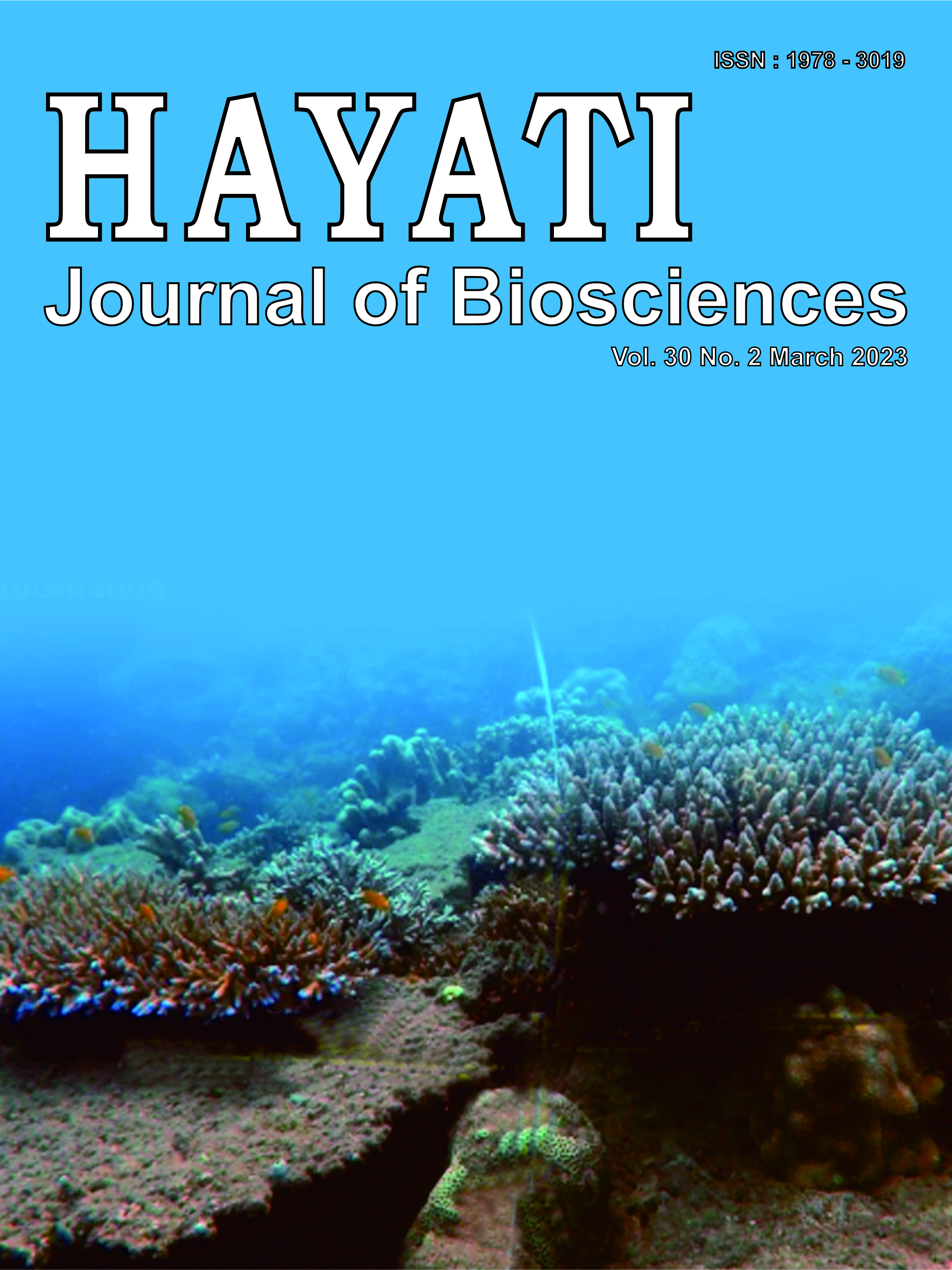First Record of The Thecate Marine Dinoflagellate Protoperidinium abei (Peridiniales, Dinophyceae) in Indonesia
Abstract
Two identical dinoflagellate cell specimens were found in a seawater sample collected from Tanjung Pasir Beach (TPB; 6.01 S, 106.8 N), Banten, Indonesia and subjected to morphological characterization light microscopy (LM). The cells measured 71.97–72.86 µm long and 52.55–52.76 µm wide, fusiform or biconical-shaped, with tapered apical and antapical horns. A sharp and pointy spine was present at the antapex. The Kofoidean thecal plates arrangement pattern of the specimens was formulated as Po, 4', 2a, 7'', 3(?)c, 4s, 5''', 2''''. Based on this thecal plate tabulation formula combined with the cell morphologies, the specimens conformed to the original description of, and therefore identified as, Protoperidinium abei (Paulsen) Balech. This study constitutes the first record of P. abei in Indonesia and the first to illustrate and describe its detailed morphology using LM.
Downloads
Copyright (c) 2023 Danang Ambar Prabowo, Debora Christin Purbani, Diah Radini Noerdjito

This work is licensed under a Creative Commons Attribution-NonCommercial 4.0 International License.
HAYATI J Biosci is an open access journal and the article's license is CC-BY-NC. This license lets others distribute, remix, tweak, and build upon author's work, as long as they credit the original creation. Authors retain copyright and grant the journal/publisher non exclusive publishing rights with the work simultaneously licensed under a https://creativecommons.org/

























.png) IPB University
IPB University Department of Biology
Department of Biology The Indonesian Biological Society
The Indonesian Biological Society 

